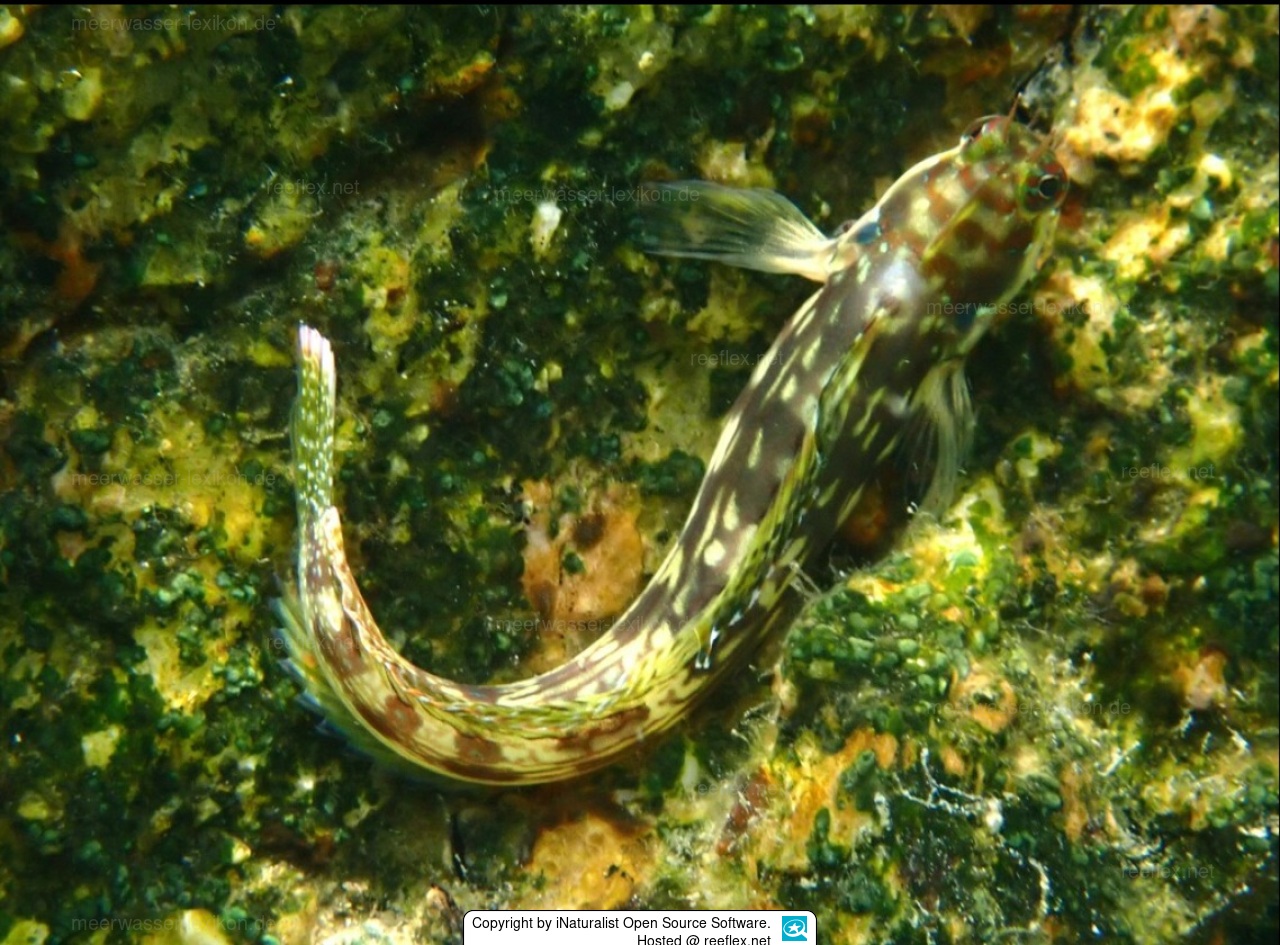Info
Adult specimens of Blenniella bilitonensis are found in tidal zones in large rock pools or coastal bays and are often encountered in tidal pools
The blennies feed on algae, which they scrape off debris or rock surfaces.
Since algae always contain small to tiny invertebrates, the slime fish, which are actually herbivorous, also consume additional meat.
Sometimes, numerous individuals can be observed clinging to rocks outside the water at low tide.
If these animals are disturbed in rock pools at low tide, they sometimes jump out of the water to reach other rock pools or safer, deeper water nearby.
Colors: Blue, gray, silver, white
Etymology:
The genus name “Blenniella” is a diminutive form of “blennius,” which comes from Greek, where ‘blenios’ means “slime.”
Etymology:
The species name “bilitonensis” refers to the type locality, the western island of Belitung (then Biliton), Indonesia.
Synonyms:
Alticus novemmaculosus Snyder, 1908 · unaccepted
Istiblennius bilitonensis (Bleeker, 1858) · unaccepted
Salarias bilitonensis Bleeker, 1858 · unaccepted
Salarias brevoorti Fowler, 1946 · unaccepted
Salarias deani Jordan & Seale, 1905 · unaccepted
Salarias hendriksii Bleeker, 1858 · unaccepted
Salarias periophthalmus visayanus Herre, 1934 · unaccepted
Synoyms:
Alticus novemmaculosus Snyder, 1908 · unaccepted
Istiblennius bilitonensis (Bleeker, 1858) · unaccepted
Salarias bilitonensis Bleeker, 1858 · unaccepted
Salarias brevoorti Fowler, 1946 · unaccepted
Salarias deani Jordan & Seale, 1905 · unaccepted
Salarias hendriksii Bleeker, 1858 · unaccepted
Salarias periophthalmus visayanus Herre, 1934 · unaccepted
The blennies feed on algae, which they scrape off debris or rock surfaces.
Since algae always contain small to tiny invertebrates, the slime fish, which are actually herbivorous, also consume additional meat.
Sometimes, numerous individuals can be observed clinging to rocks outside the water at low tide.
If these animals are disturbed in rock pools at low tide, they sometimes jump out of the water to reach other rock pools or safer, deeper water nearby.
Colors: Blue, gray, silver, white
Etymology:
The genus name “Blenniella” is a diminutive form of “blennius,” which comes from Greek, where ‘blenios’ means “slime.”
Etymology:
The species name “bilitonensis” refers to the type locality, the western island of Belitung (then Biliton), Indonesia.
Synonyms:
Alticus novemmaculosus Snyder, 1908 · unaccepted
Istiblennius bilitonensis (Bleeker, 1858) · unaccepted
Salarias bilitonensis Bleeker, 1858 · unaccepted
Salarias brevoorti Fowler, 1946 · unaccepted
Salarias deani Jordan & Seale, 1905 · unaccepted
Salarias hendriksii Bleeker, 1858 · unaccepted
Salarias periophthalmus visayanus Herre, 1934 · unaccepted
Synoyms:
Alticus novemmaculosus Snyder, 1908 · unaccepted
Istiblennius bilitonensis (Bleeker, 1858) · unaccepted
Salarias bilitonensis Bleeker, 1858 · unaccepted
Salarias brevoorti Fowler, 1946 · unaccepted
Salarias deani Jordan & Seale, 1905 · unaccepted
Salarias hendriksii Bleeker, 1858 · unaccepted
Salarias periophthalmus visayanus Herre, 1934 · unaccepted







 iNaturalist Open Source Software
iNaturalist Open Source Software









